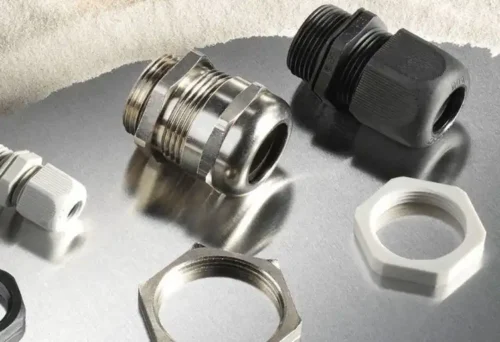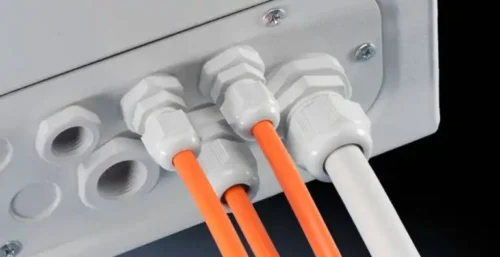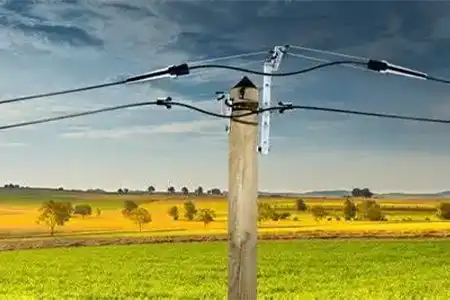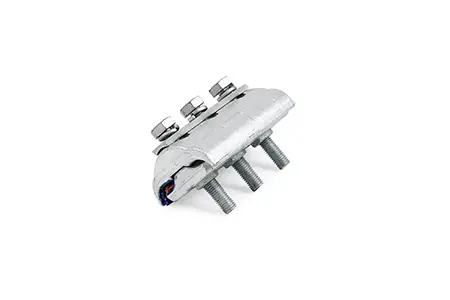Single Compression Cable Glands or Double Compression Cable Glands: The Ultimate Guide

What is a cable gland?
Ever wondered how cables get safely in and out of electrical enclosures? The unsung hero of this process is a small but important component: the cable gland. Of these, single compression cable glands play a crucial role. Not only do they allow cables to pass through safely, but they also protect against dust and moisture and ensure that the cables are rigid and strong. They help to ground the cables safely, emphasizing their importance from a safety perspective.
These seals are the devices used in electrical enclosures for the entry and exit of cables. They also act as seals to prevent dust and moisture from intruding into the electrical enclosure. In addition, they provide mechanical support and rigidity to the cables. From a safety perspective, cable seals help in the electrical grounding of cables.
In this blog, we will focus on the two main types of cable sealing sleeves, namely single compression cable sealing sleeves and double compression cable sealing sleeves. Each type of sealing sleeve has unique benefits and uses. After reading this blog, you will have a better understanding of them and be able to differentiate between them. We will explore how they work, the main differences between them, and how to choose the right sealing sleeve for your needs.
Types of Cable Glands
Cable glands come in various types, each suited for different applications and environments. While there are many types, including armored, non-armored, industrial, and hazardous area glands, this guide will focus on two key types: single-compression and double-compression cable glands.
Single compression cable glands
Single compression gaskets essentially provide grip or compression in only one location, i.e. cable armoring. Typically, these gaskets are used for lightweight armored cables.
They are very simple to manufacture and consist of a threaded body, compression nut, and a single compression seal. These seals are suitable for applications requiring medium intrusion protection and are often chosen when budgets are limited.
One of their main advantages is the ease of installation. The installation process is as simple as inserting the cable into the gland, tightening the compression nut, and securing the cable. This simplicity also makes them more cost-effective. You can see the detailed installation procedure for a single compression cable gland here.
It should be noted, however, that single-compression gaskets offer less protection against dust, moisture, and other contaminants than double-compression gaskets. They are typically used indoors or in less demanding environments.
Key Components
- Body: The main part that houses the cable.
- Sealing Ring: Ensures a tight seal around the cable.
- Nut: Tightens the gland onto the cable.
Applications and Uses
Single compression cable glands are ideal for indoor and outdoor applications where the exposure to environmental elements is moderate. They are commonly used in electrical panels, junction boxes, and general wiring tasks.
Benefits and Advantages
- Cost-Effective: Generally less expensive than double compression glands.
- Easy Installation: A simpler design makes them easier to install.
- Sufficient for Many Applications: Adequate for environments that don’t require high-level protection.
Limitations
Lower Protection: Less effective in highly corrosive or extreme environments.
Limited Strain Relief: Provides less strain relief compared to double compression glands.
Double compression cable glands
These gaskets have two compression seals. The first is an inner seal that clamps the cable sheath and the second is an outer seal for additional entrance protection. This dual sealing mechanism provides significantly increased protection against dust, water, oil, hazardous gases, and other contaminants, making it particularly suitable for outdoor and harsh environments where a robust seal is required.
These seals are available in a variety of sizes and are ideal for cables up to 1,000 square millimeters, including control cables. Dual compression seals provide excellent cable retention and strain relief. Their dual sealing system ensures a safer and more reliable connection, minimizing the risk of cable pull-out or damage. You can see the detailed installation process in this video.
Due to their superior sealing capabilities, dual compression seals are commonly used in industries such as oil and gas, marine and petrochemical, mining, and other environments where there is a high level of exposure to wet or corrosive substances.
However, these glands are approximately 30% longer and more expensive than single compression glands.
Key Components
- Body: The main part that houses the cable.
- Inner Sealing Ring: Provides the first level of sealing.
- Outer Sealing Ring: Provides the second level of sealing.
- Nut: Tightens the gland onto the cable.
Applications and Uses
Double compression cable glands are ideal for hazardous areas and industrial applications where maximum protection is required. They are often used in petrochemical plants, refineries, and other harsh environments.
Benefits and Advantages
- Superior Protection: Excellent sealing against dust, moisture, and chemicals.
- Enhanced Strain Relief: Provides better strain relief, reducing the risk of cable damage.
- Durability: More robust and durable, suitable for extreme conditions.
Limitations
Higher Cost: More expensive due to the additional components and protection.
Complex Installation: Requires more effort and precision to install correctly.
Single Compression Cable Glands or Double Compression
Comparative Analysis
Protection: Double compression glands offer better protection due to dual sealing.
Cost: Single compression glands are more cost-effective.
Installation: Single compression glands are easier to install.
Strain Relief: Double compression glands provide superior strain relief.
Performance Comparison
Double compression glands outperform single compression glands in terms of durability and protection, making them suitable for more demanding applications.
Cost Analysis
While double compression glands are more expensive, their enhanced protection and durability justify the cost in harsh environments.
Suitability for Different Applications
Single compression glands are suitable for less demanding applications, while double compression glands are ideal for industrial and hazardous environments.

FAQs
- Which cable gland type is more suitable for hazardous environments?
Double compression cable glands are generally more suitable for hazardous environments. Their dual sealing mechanism provides superior protection against dust, moisture, and chemicals, making them ideal for use in harsh industrial settings. - Can I use single compression cable glands for outdoor applications?
Single compression cable glands can be used for outdoor applications, but they are better suited for environments with moderate exposure to environmental elements. For more extreme outdoor conditions, double compression cable glands are recommended due to their superior sealing capabilities. - What are the benefits of using single compression cable glands?
Single compression cable glands are cost-effective, easy to install, and sufficient for many indoor and outdoor applications where exposure to harsh environmental conditions is minimal. They provide adequate sealing and strain relief for general use. - How do I choose the right size of cable gland for my cable?
To choose the right size of cable gland, you need to consider the diameter of your cable. Most cable glands come with a size chart or specification sheet that indicates the range of cable diameters they can accommodate. Ensure that the gland you select fits snugly around your cable to provide an effective seal. - What materials are cable glands made from, and how do I choose the right material?
Cable glands can be made from various materials, including brass, stainless steel, plastic, and aluminum. The choice of material depends on the application and environmental conditions. For example, stainless steel is ideal for corrosive environments, while plastic may be suitable for less demanding applications. - Can I install double compression cable glands myself, or do I need a professional?
While it is possible to install double compression cable glands yourself, it requires more effort and precision compared to single compression glands. If you are not experienced with such installations, it is advisable to seek professional assistance to ensure a proper and secure installation. - What are the common mistakes to avoid when installing cable glands?
Common mistakes include over-tightening the gland, which can damage the cable, and not positioning the sealing rings correctly, which can lead to ineffective sealing. It is important to follow the manufacturer’s installation instructions carefully to avoid these issues. - How often should cable glands be inspected and maintained?
Cable glands should be inspected regularly for signs of wear, damage, or corrosion. Routine maintenance includes cleaning the glands to maintain sealing effectiveness and replacing any worn or damaged components. The frequency of inspections depends on the environmental conditions and the criticality of the application.
Conclusion
The choice between a single or double compression cable gland depends on the specific needs of your project. If you are working in a low-risk environment, a single compression cable gland would be the right choice. However, if your project requires a higher level of ingress protection, enhanced reliability, and additional support for heavily armored cables, then dual compression cable glands are recommended.
Remember, the most important thing is to understand the requirements and ensure that the selected cable gland is best suited to your application. This should only be done by an authorized engineer.
Contact Us
Thanks for reading the blog, WZJ is a leading manufacturer and supplier of electrical components sold in over 80 countries. To get a quote or talk to one of our industry experts, please visit our Contact Us section.
Website: https://www.wzjelec.com/
Product: https://wzjelec.com/product
Email: rose@sunjelec.comAuther: Leb






